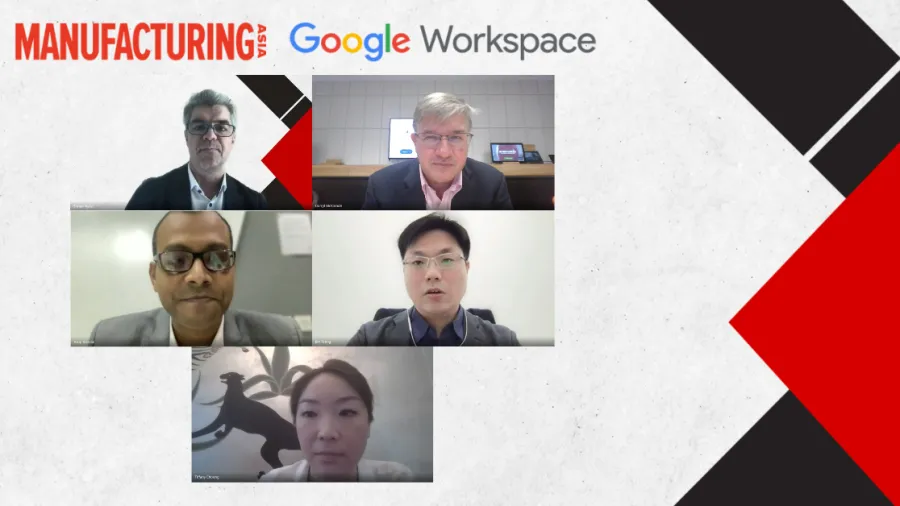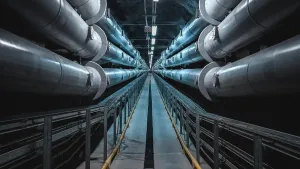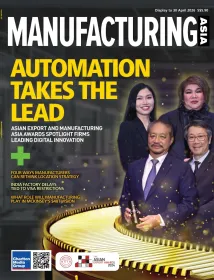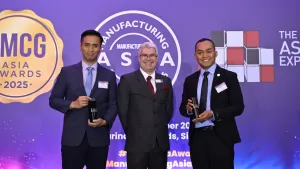
Automation and collaboration tools improve productivity, block cyber threats and improve Frontline worker experience
Manufacturing Asia, in partnership with Google Workspace, held the “Industry CXO Conversations Transforming Manufacturing” event where they discussed the issues in the industry.
Legacy technologies in network infrastructure and software are prevalent across the industry, perpetuating issues related to maintenance, incompatibility with modern cloud-based solutions, weak security, and poor employee collaboration. This leads to a challenging environment both for frontline and knowledge workers.
“The pandemic has accelerated the need for a flexible and secure hybrid platform. Teams are becoming more distributed and more people are working from home, increasing the need for secure processes” said Tiffany Choong, Solutions Value Advisor for JAPAC at Google Cloud. “With more people working from different devices and locations, they are more vulnerable to security incidents. However, we still need to enable a flexible work option and allow teams to interact effectively.”
Entry Points for Threats
Speaking before manufacturing industry leaders at the recent “Manufacturing Asia Webinar: Industry CXO Conversations Transforming Manufacturing” event jointly organised by industry news portal Manufacturing Asia and Google Workspace, Choong dove deeper into the issues facing the industry.
“Feelings of isolation amongst team members who are working remotely create dissatisfaction. This anxiety is exacerbated by uncertainty in the labour market,” she said. “Companies are also seeing more security issues due to legacy productivity and collaboration tools,” citing that 94% of malware is installed via malicious emails or attachments and around 3 million deceitful URLs are spotted and stopped by Gmail every day.
Specific to manufacturing, one key entry point for cyber threats is engineering workstations which are connected to devices on the plant floor.
Besides these, organisations also face challenges in diversifying their supply chains and upskilling labour with automated, data-driven capabilities, said Arup Mandal, Head of IT at Ather Energy, who was amongst the keynote panelists of the webinar.
Improving the Employee Experience
To this end, new AI- or machine learning-driven tools and platforms have focused on three areas where digital tools can help improve the manufacturing of the employee experience, according to Darryl McKinnon, Head of Google Workspace in APAC.
“Collaboration would be the most important one,” he said. One common platform across organisations – from design to operations, sales, marketing, to the shop floor – helps tap into the collective knowledge of the enterprise and greatly improves the employee experience. Externally, the right collaboration tool fine-tunes the coordination with suppliers and customers in a more secure manner, McKinnon added.
Not forgetting a priority area in manufacturing – employee safety – McKinnon underscored that “data analytics and predictive analytics have been increasingly used across organisations to evaluate the safety standards of the work environment more objectively.” A typical example would be the video analytics platforms which help track shop floor safety very effectively.
In today’s business environment where C-level executives are pressed to adopt sustainability strategies, Jim Tseng, Senior Director at Taiwan-based Microfusion Technology, emphasised that Google Workspace resides in the Google Cloud Data Center, which currently runs on carbon-neutral renewable energy. Google aims to run on carbon-free energy, 24/7, at all its data centres by 2030.
“When we use this software, we are saving our environment and helping these manufacturing companies reduce their carbon emissions,” Tseng said.
A Little Goes a Long Way
In terms of productivity levels, Tseng said Google Workspace has helped his company’s clients reduce overall total monthly work times by 70%, equivalent to about 30 hours per person. The platform has also replaced other third-party systems that do not have integrated email, spam filter systems, and video conference software.
“Our manufacturing customers are impressed with Google Docs, Sheets, etc, because this collaboration tool can save their communication time without sending different versions of documents back and forth,” he said. In addition, the platform has reduced the complexity for system admins or managers to manage all information within the organisation.
“Automation is one of the areas where a small amount of time saved adds up quickly,” Google Cloud’s Choong echoed. “People tend to underestimate this because the number of users can be quite small for each solution. But put together the gains across hundreds of users in different teams, that adds up to quite a large amount of time saved and reallocated to value add activities.”
Aside from the efficiency that automation brings, organisations are also looking at tools and platforms that can help employees utilise data effectively, upskill themselves, and help make the organisation more streamlined, Mandal added.
He related how a leading electric vehicle design and manufacturer in India, features more than 50 sensors on one of its scooter models. These sensors constantly feed data about the scooter’s performance to the Google Cloud platform, up to 2.5 million times daily. As the data is churned in the cloud, it provides real-time feedback to the rider for a smoother drive and to the engineering team to improve the scooter’s overall performance.
Strategies for the Future
Even with these advantages of implementing the right collaboration tools, manufacturers still have to navigate other challenges on their digital transformation journey.
One of these challenges is a constant operational improvement based on varying standards across the enterprise, McKinnon said. “Everyone's always looking to improve and optimise operations and that varies from the factory floor through to employee productivity.”
Integrating the different systems throughout the organisation, from machines on the factory floor to the process room, and on to suppliers’ systems, manufacturers must ensure that the supply chain, and the whole of operations, are working continuously, smoothly, and securely.
Expanding on this, Mandal muses how companies can use digitisation to enhance the customer experience as well as safety for automotive companies. “It doesn't stop at the factory gate. We are looking at how the entire customer ownership experience is bettered through digital tools.”
In Taiwan, home to a strong manufacturing industry, which includes semiconductors, electronics, and renewable energy, the digital journey could be a long and gradual process owing to the industry’s non-cloud nature.
In this case, direct support from the CIO or CEO is key to a smooth transition. “All members from different functions must participate in this transformation journey and embrace the technology,” Tseng said.

















